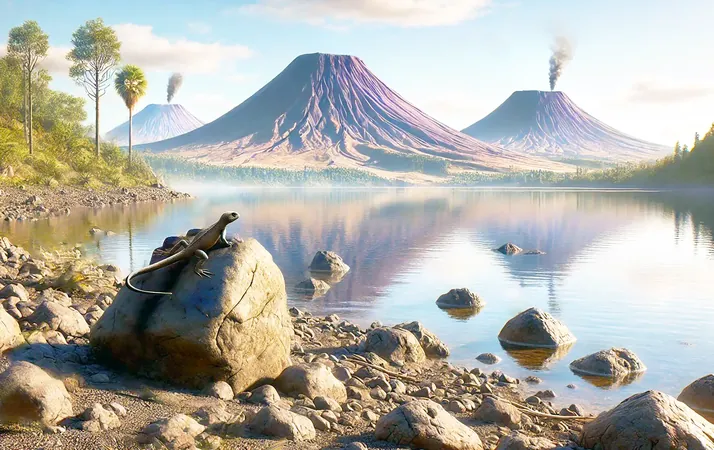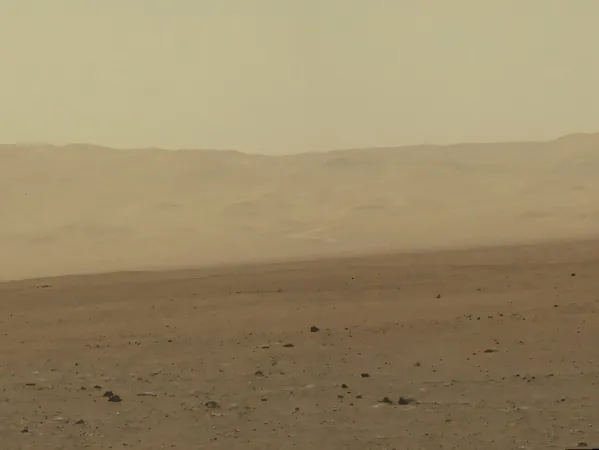
Major Breakthrough Unveils New Evidence in the Fossil Record – Meet the Ancient Tetrapod!
2025-06-02
Author: Sarah
A Groundbreaking Discovery from the Past
In a remarkable turn of events, an amateur paleontologist's 1984 find has gained newfound significance. The tiny fossil, known as Westlothiana lizziae, measuring a mere 20 centimeters (about 8 inches), is now shedding light on an era crucial to our understanding of life making its monumental leap from water to land.
Unlocking the Mysteries of Romer’s Gap
Previously, Westlothiana was recognized as an early tetrapod, a group that eventually evolved into amphibians, reptiles, birds, and mammals. However, scientists faced challenges in pinning down its exact age. A recent study by researchers at The University of Texas at Austin has utilized cutting-edge radiometric dating techniques on rock samples from East Kirkton Quarry, unveiling a staggering truth: these fossils date back up to 346 million years, earlier than the previously estimated 331 million years.
What is Romer’s Gap?
This new dating positions Westlothiana lizziae squarely in a perplexing interval in the fossil record known as Romer's Gap, spanning from 360 to 345 million years ago. This period has perplexed scientists for decades as it lacks numerous transitional tetrapod fossils, raising questions about the evolution from aquatic to terrestrial life.
An Unusual Fossil Oasis
Researchers have revealed that the rocks within the quarry stealthily tell a tale of a dynamic environment, with Lake Cadell previously situated near active volcanoes. Volcanic mud, ash, and lava contributed to conditions that preserved these unique fossils. The research team, led by the recently graduated Hector Garza from the Department of Earth and Planetary Sciences, analyzed layers of rock that held a treasure trove of fossils, including Westlothiana and five other ancient species.
The Science Behind the Discovery
Garza’s team meticulously extracted zircon crystals from sediment samples, using uranium-lead dating to uncover the ancient timeline. Their analysis revealed a reliable age of approximately 341 million years, clearing the dust away from Romer’s Gap and enriching our knowledge of early vertebrate evolution.
Decoding Ancient Ecosystems
What's even more intriguing is the chemistry of the lakebed rocks. Scientists found signs of fluctuating conditions in the ecosystem, with varying elements indicating powerful volcanic influences and sediment influx from highlands. This intricate interplay of geological processes mirrored the biological diversity captured in the fossils, showcasing a rich ecosystem teeming with life.
Implications for Evolutionary Biology
Julia Clarke, a prominent professor and co-author of the study, emphasized the significance of the East Kirkton tetrapods in altering our understanding of vertebrate evolution. With these new findings, researchers can better calibrate evolutionary timelines and models, unlocking secrets about how major groups like amphibians and reptiles began their journey onto land.
Romer’s Gap: Not a Void, But a Rich History
Once dismissed as a blank page in paleontology, Romer's Gap is now revealed to be full of potential. The unique conditions at East Kirkton have allowed delicate fossils, such as those of Silvanerpeton, Balanerpeton, and others, to survive. Each discovery not only enriches our knowledge of ancient life but also demonstrates how geology and paleontology intertwine to narrate the evolution of life as we know it.
Published Findings
This groundbreaking study has been published in the journal PLOS One, signaling a pivotal moment in our quest to understand one of the most mysterious chapters in vertebrate evolution.



 Brasil (PT)
Brasil (PT)
 Canada (EN)
Canada (EN)
 Chile (ES)
Chile (ES)
 Česko (CS)
Česko (CS)
 대한민국 (KO)
대한민국 (KO)
 España (ES)
España (ES)
 France (FR)
France (FR)
 Hong Kong (EN)
Hong Kong (EN)
 Italia (IT)
Italia (IT)
 日本 (JA)
日本 (JA)
 Magyarország (HU)
Magyarország (HU)
 Norge (NO)
Norge (NO)
 Polska (PL)
Polska (PL)
 Schweiz (DE)
Schweiz (DE)
 Singapore (EN)
Singapore (EN)
 Sverige (SV)
Sverige (SV)
 Suomi (FI)
Suomi (FI)
 Türkiye (TR)
Türkiye (TR)
 الإمارات العربية المتحدة (AR)
الإمارات العربية المتحدة (AR)